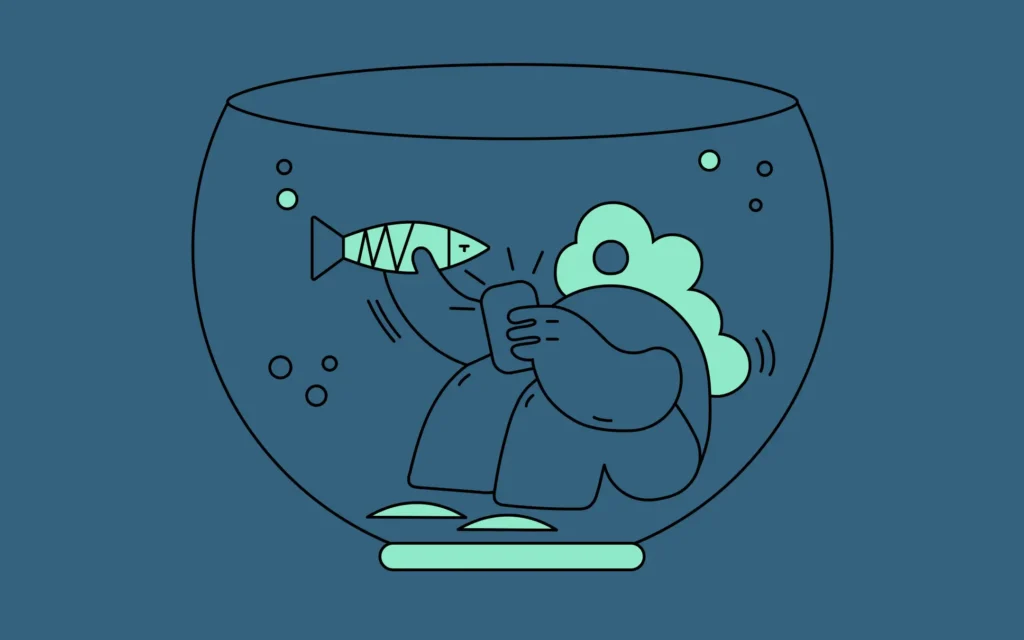Six Steps to Improving Brand Behavior
Six Steps to Improving Brand Behavior

On Your Best Brand Behavior
Whether it’s B2B or B2C, brands need to be on their best behavior at all times. There’s nowhere to hide in this digital world when a brand misbehaves. A poor customer service experience, an offensive remark from a CEO, a bad workplace reputation, a lack of transparency, or lies, are types of brand behavior that create a lasting (and widespread) impression.
When business suffers, often, a business can trace it back to a misstep in the brand’s behavior. And though it’s easy to revamp the website or roll-out workplace training as a quick fix, the real challenge is making a shift in brand behavior across the board, starting on the inside with the way employees approach their work and each other.
Time for change
Identifying and aligning around a strong brand promise is critical as your brand evaluates its behavior against its aspirations. But even when there’s a guiding light for how the brand ‘should’ behave across all touchpoints, there may still be a disconnect. When people aren’t living up to the promise, it’s important to make a plan to truly affect how people think and feel about your brand.
Easier said than done
Pointing at one aspect of the brand and expecting results doesn’t cut it. Even so, companies spend billions of dollars on training programs as an obvious ‘fix’ for brand behavior. HBR notes that in the US alone $160 billion are spent on training programs that don’t work. Bad behavior persists without evidence that these programs enhance organizational performance.
Blaming it on external factors isn’t the answer either. It’s not the customers’ fault if the brand isn’t living up to its promise. If the market changes or competition creeps in and customers don’t respondlike they used to, the brand needs to adjust its behavior. A comprehensive approach that looks at behavior inside and outside the business is necessary to truly ignite change.
Creating and Sustaining Change
When the writing is on the wall that the brand’s behavior is negatively affecting its performance, there are six things that will make a significant impact:
1. Solicit an external perspective.
Brand behavior change comes from within, but it’s nearly impossible for top-down change to ignite from the inside. The recent HBR story on leadership training notes that ‘HR managers and others find it difficult or impossible to confront senior leaders and their teams with an uncomfortable truth’ that the policies, procedures and everyday behavior of an organization’s top management are responsible for the brand’s poor behavior. And they are. Using an outside agency to help identify the shifts the brand needs to make in its behavior and develop a clear strategy will ignite the behavior change in a much more productive way than is possible if internal leadership is tasked with the job.
2. Start at the top.
With an external team involved, begin by working with senior leaders to define the values and strategic direction the brand will follow. Then, identify the change in your leadership team’s behavior and commit to making shifts that align to the strategic direction. The brand’s promise should serve as the guiding light in identifying the type of behavior necessary to change. Aligning leadership behavior to the brand promise ensures that the rest of the organization has an example for their own behavior shifts, and subsequently the brand’s external behavior is well positioned to follow-suit.
3. Examine and redesign roles and responsibilities:
This must happen at all levels of the organization to reflect the brand’s promise and motivate change. Ensuring that the brand has the infrastructure in place to support its promise is critical. A brand positioned around its excellent customer service, for example, needs to have the team and people in place to execute.
4. Evaluate day-to-day behaviors:
Evaluating day-to-day behaviors outside of job descriptions helps people identify the individual things they can do to better represent the brand. At the end of the day, a brand’s behavior is reflected in the small things that it does. And, more often than not, the people behind the brand are responsible for every small touchpoint the brand makes with its audience. Establishing internal behavior expectations beyond job descriptions ensures the brand can live up to its promise and create a reputation that people come to associate as integral to the brand itself.
5. Measure change:
Measuring change for individual performance and organizational KPIs. Setting new expectations for behavior is one thing. Holding the people behind the brand responsible for the new behavior is another. Not only should individuals be held accountable, the business should too. Gauge the behavior change with established metrics on a recurring basis to ensure it lasts.
6. Adjust and adapt:
It’s important to constantly adjust and adapt your systems and procedures to sustain new behavior. Set a timeline for change and commit to reevaluating what’s working and what’s not in a designated time period. There’s always room for improvement.
If the brand needs to shift the way it behaves in order to improve its reputation, following these six steps will help ensure the change in behavior is widespread and lasting. When done right, it can have a positive impact on employee engagement, sales, people’s perception of your brand, and your business.
Emotive Brand is a San Francisco brand strategy agency






